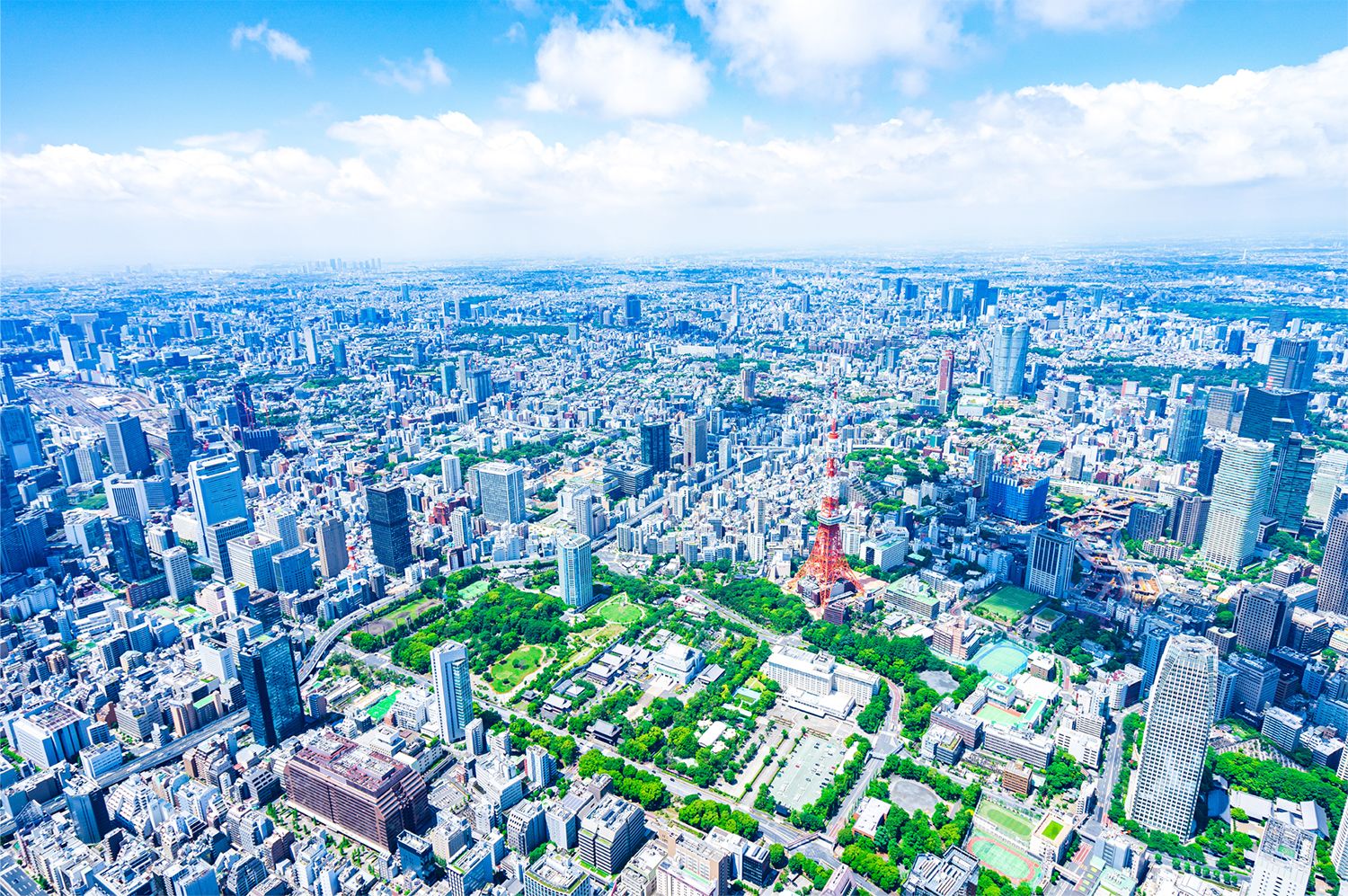“Land of Cherry Blossoms” - Genuine and trusted land
Japan is an island nation, consisting of 6,852 islands, including 4 large islands: Hokkaido, Honshu, Shikoku and Kyushu. With an area of 377,944 km2, about 73% of which is mountains and forests, Japan has a temperate and subtropical climate with 4 distinct seasons.

Overview of Tokyo, Japan. (Photo: Reuters).
Japan is divided into 47 provinces and cities, including 1 metropolis (Tokyo), 1 circuit (Hokkaido), 2 urban prefectures (Osaka and Kyoto) and 43 prefectures. At the same time, based on geography, history and economic characteristics, Japan is often divided into 8 large regions including: Hokkaido, Northeast, Kanto, Central, Kinki (also known as Kansai), Chugoku, Shikoku and Kyushu-Okinawa region.
Japan is a country with a long and very unique cultural tradition such as the art of flower arrangement (ikebana), tea ceremony (sado), calligraphy (shodo), wrestling (sumo)...
With a population of 124.50 million people (May 2023), Japan is currently the third largest economic power in the world with a GDP of about USD 5,000 billion (2022) and an average GDP per capita of about USD 40,000.
Regarding economic policy, Japan's current top priority is economic recovery and development, focusing on two "growth wheels" of strengthening supply capacity and responding to the problem of escalating prices.
In foreign policy, Japan continues to implement the foreign policies of previous Prime Ministers; continues to consider the Japan-US alliance as a fundamental axis and promotes the three pillars of diplomacy, security and defense.
Historically, Japan and Vietnam had exchanges more than 1,300 years ago. In the 8th century, monk Phat Triet of Lam Ap (now Central Vietnam) went to Nara, the capital of Japan, to exchange Buddhism and music at Dai An Pagoda. Thereby, Lam Ap music was introduced, which is still performed today in Japanese court music with harmony in sound with Hue court music.
After 50 years of the establishment of diplomatic relations, the friendship and cooperation between Vietnam and Japan are said to be in the best stage of development, with high political trust. High-ranking leaders of the two countries maintain regular visits and contacts at international and regional forums, notably 12 times the Japanese Prime Minister visited Vietnam and 21 times the Prime Minister visited Japan; 2 times the Speaker of the House of Representatives and 2 times the President of the House of Councilors of Japan, 4 times the Chairman of the National Assembly visited Japan.
Based on a common strategic vision on the potential for cooperation and the future of Vietnam-Japan relations, the two countries continue to witness rapid and substantive development in their extensive strategic partnership over the fields of economics, politics, diplomacy, security and defense, in the spirit of mutual understanding and respect and mutually beneficial cooperation. Japan continues to be Vietnam's most important economic partner, the largest Official Development Assistance (ODA) provider, the second largest partner in labor cooperation, the third in investment and tourism, and the fourth in trade.
The two countries have built many important legal frameworks for bilateral relations, such as the Joint Committee for Industrial, Trade and Energy (since 2014); the Vietnam-Japan Cooperation Committee, co-chaired by two Foreign Ministers (since 2007); Ministerial-level Agriculture Dialogue (since 2014)…
Both Vietnam and Japan are members of new generation free trade agreements, focusing on promoting economic linkages and trade liberalization through the signing and implementation of the Comprehensive and Progressive Agreement for Trans-Pacific Partnership (CPTPP) and Regional Comprehensive Economic Partnership (RCEP).
Relations between the localities of the two countries are also a bright spot with more than 100 pairs of localities having cooperation agreements, typically Ho Chi Minh City with Osaka (2007), Nagano (2017); Hanoi with Fukuoka (2008), Tokyo (2013); Da Nang with Sakai (2009), Yokohama (2013), Hue-Kyoto (2014); Phu Tho-Nara (2014); Hung Yen-Kanagawa (2015); Hai Phong-Niigata (2015)...
Currently, Japan has nearly 5,200 valid projects with a total investment capital of more than USD 71 billion, ranking third among the 143 countries and territories implementing investment projects in Vietnam. In the nine months since the beginning of the year, the import-export turnover of the two countries reached nearly USD 33 billion. Japan is also Vietnam's leading ODA country, especially for projects to respond to climate change in Vietnam in recent years.
People-to-people exchanges are increasingly growing strongly and deeply, thereby, contributing to strengthening understanding and friendship between the people of the two countries. The total number of Vietnamese people living, working and studying in Japan is about 520,000, making it the second largest foreign community in the Land of the Rising Sun, thereby, actively contributing to Japan's socio-economic development and serving as an important friendship bridge in the two countries' relationship. Vietnamese people currently live, work and study throughout Japan's 47 prefectures and centrally run cities.
Cooperation in education and training between the two countries has developed in many forms, of which Japan is one of the largest non-refundable aid countries for the education and training industry in Vietnam. Japan has supported the upgrading of four Vietnamese universities to high-quality universities as well as is cooperating to build the Vietnam-Japan University to train high quality human resources for Vietnam in the fields of science and technology, management and services. Vietnam is the first country in the world to officially introduce Japanese into secondary school teaching since 2003, and primary school since 2019. To date, the number of Vietnamese international students in Japan has reached more than 51,000 people.
Japan continues to pay attention to and promote cooperation between the two countries in various fields, especially in supporting Vietnam to promote industrialization, modernization and deep international integration as well as supporting Vietnam in developing strategic infrastructure, digital transformation, green transformation, the digital economy and energy transition...






